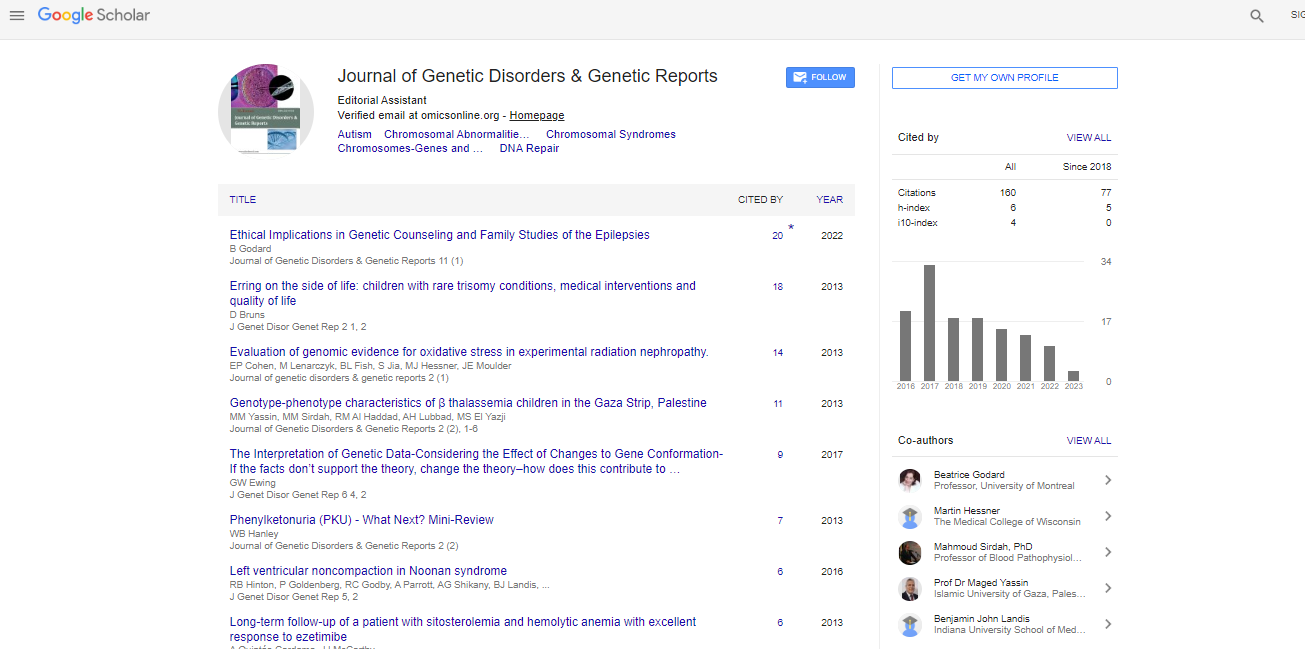Research Article, J Genet Disor Genet Rep Vol: 7 Issue: 1
Investigation of the Origin of Common LDLR Mutation Alleles in New Zealand Familial Hypercholesterolemia Patients
Laurie AD1*, Spain RJ1, Reid N2 and George PM3
1Canterbury Health Laboratories, Christchurch, New Zealand
2Christchurch Hospital Lipid Disorders Clinic, Christchurch, New Zealand
3Department of Pathology, University of Otago (Christchurch), Christchurch, New Zealand
*Corresponding Author : Laurie AD
Canterbury Health Laboratories, P.O. Box 151, Christchurch, New Zealand
Tel: +(64) 3 3640548
Fax +(64) 3 3650545
E-mail: andrew.laurie@cdhb.health.nz
Received: May 09, 2018 Accepted: May 30, 2018 Published: June 07, 2018
Citation: Laurie AD, Spain RJ, Reid N, George PM (2018) Investigation of the Origin of Common LDLR Mutation Alleles in New Zealand Familial Hypercholesterolemia Patients. J Genet Disor Genet Rep 7:1. doi: 10.4172/2327-5790.1000167
Abstract
Objective
Amongst New Zealand patients with familial hypercholesterolaemia (FH) some LDLR mutations have been identified in multiple unrelated individuals. This could be because these variants occur at sites prone to recurrent mutation, or because ancestral mutation alleles are present at an increased frequency in the population. The aim of this study was to investigate the contribution of these mechanisms to the aetiology of FH in New Zealand.
Methods
To assess which of these scenarios underlies the prevalence of these common LDLR mutations, haplotype analysis was performed using five short tandem repeat (STR) markers which flank LDLR. Haplotype data was used to identify whether mutation alleles were identical-by-descent (IBD), indicating an origin from a common ancestor. Absence of a common complete or partial haplotype would suggest mutations had arisen independently in separate events.
Results
Of the 26 LDLR mutations included in the study which have been detected in two or more index patients, most (65%) showed strong evidence of IBD. The data also revealed further complexities, such as the presence of two ancestral alleles for some mutations, and evidence of historic recombination events. The South African Afrikaner mutations present in the cohort were confirmed to have common ancestral haplotypes, although for FH Afrikaner-1 another distinct ancestral allele was also identified.
Conclusion
The high prevalence of some LDLR gene mutations in New Zealand FH patients reflects the presence of ancestral mutation alleles in the population. This is likely to be either a founder effect whereby early settlers introduced mutation alleles to New Zealand or due to the prevalence of the mutation in other populations from where ongoing migration is occurring, such as South Africa and parts of Europe.
 Spanish
Spanish  Chinese
Chinese  Russian
Russian  German
German  French
French  Japanese
Japanese  Portuguese
Portuguese  Hindi
Hindi 



